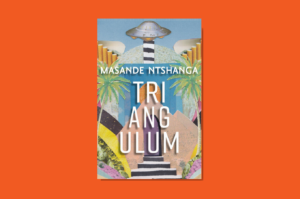
Every June, a ripple of excitement moves through the African literary world when the Caine Prize short list is announced. In a sense, it’s a gauge of what the contemporary African short story looks like; what styles, topics and moods reverberate and bubble to the surface. Granted, the shortlist not an objective measure, since a lot depends on which stories publishers submit and the taste of each year’s judges. Nevertheless, I look forward to each year’s list as it introduces us to fresh new voices and celebrates those we may already know.
As a writing teacher, I am especially interested in the stories from a craft angle: what is it about each one that got it selected, and how can craft help us unpack what makes each story masterful? I intend to ruminate on this, one story per week, and hope it provokes a conversation about the art of the African short story. These will not be standard reviews, nor a comparative take on the five stories; rather, I will highlight how each writer wields one or two craft tools to create an artful whole. The assumption is that readers will have read the stories. Go here to read more of my reviews of these stories.
***
A Sense of Place: Collector of Memories by Joshua Chizoma [read the story here]
We read fiction to enter into another world and dwell in it for a while, albeit as invisible spectators. A successful story immerses us fully into this world, creating a ‘suspension of disbelief,’ yes, but even more: a sense that we are not simply reading the story, but feeling it, living it, breathing its air. Joshua Chizoma gives us this sense, generously and masterfully, in his story, but how? I’d like to explore how he creates a sense of place, beyond mere details of setting; how he immerses us into a particular and concrete reality.
First, Chizoma make his dialogue work hard as he moves smoothly back and forth between standard English and pidgin dialogue. He purposefully uses just enough pidgin for us to enjoy the flavor of urban Nigeria without abandoning those of us who don’t know the dialect. (Luckily for Nigerian authors, Nollywood has made pidgin familiar enough for many of us.)
This is the challenge for us African writers, and anyone else who may not write in their mother tongue, or whose characters do not speak the Queen’s English (and who does?): how to elegantly balance both standard English narration and the characters’ dialect, moving from one to the other without any jarring notes? How to use both the ‘good English’ we learnt in school and yet convey exactly how our characters express themselves? Further, how may we write dialect or locally-used English, (each place has its version; its Uglish in Uganda) or direct translation from an African tongue and not make it sound clumsy?
Chizoma is adept at this balancing act. He starts with a light touch, with dialogue in standard English, then slips in “… hot pap like this that did not even burn your throat” in the very first paragraph. This unusual phrasing is the first signal of a particular way of speaking, thus a particular place. The next time he uses dialect, it is wrapped in parenthesis: “(shey those of us that wash with two sachets na fool we be?)” showing that it is part of main character’s flow of thoughts. It’s as if the author is getting us ready for much more dialect to come. Chizoma uses just enough each time for us to taste its bite, it’s idiomatic lyricism and verve, again without losing those of us who don’t know pidgin. Why should he care, you may ask? I’m not going to get into the old argument of what language to write in; our concern here is: if one chooses to write in English about a world whose expression is not only in English, how does one do it best? This author has shown us how.
Another technique Chizoma uses to conjure up the particular world of his story is to make the bodies of his characters ‘speak’ as much as their dialogue; he accompanies the dialect with body language. For example, Regina “reties her wrapper laboriously” (who doesn’t get ready for trouble when a woman does that?); throws money at the mother, and shouts, all in the first scene she appears. In turn, the main character’s mother, Florence, drops her bag, claps her hands, and pushes her breasts in Regina’s face as their conversation heats up. The physicality of the characters enhances the dialogue, and the speakers become real people in real time and space, feeling real emotions. Together with many other choice localized details that the author places like tiny gems throughout his story (pap, harmattan, Cabin Biscuits, shared toilets, recharge cards, hair braiding with attachments, etc.) we surmise that the gestures, actions, speech and material details are particular to a lower class (but not dirt poor) setting in urban Nigeria. Many of us will recognize it relative to our own contexts, but even if we don’t, the author skillfully works at building this world so that by the end of the story, we come to know well.
Another major way Chizoma creates a particularly rich sense of place is how he creates a world view and makes integral to the story. The idea of setting conjures up material details: landscape, architecture, household items, dress, and the like. Even more important and effective, I think, is not only the interior landscape of the characters but also how the community or world of the story conceptualizes itself. Chizoma leans into a spiritual world view of varied stripes: the church fellowship early on; the pastor mentioned later; the sister’s explanation of why Florence is ill; and how the biological mother finds solace and sanity in her Catholicism. What I admire about the writing is the beliefs are expressed in poignant scenes that enable them to rise above mere superstition to something more poignant, complex and profound. The author does this by taking the time to flesh out the sisters as real, whole individuals with idiosyncrasies: Rhoda with her hair saloon and ‘painful’ hands (what a delicious and rarely-written-about detail!); Chidinma, with her generosity and TV habits; and Florence, the perpetual Primary Four teacher. Don’t we recognize them all? Thus, when they interpret Florence’s illness as spiritual, we do not judge them, rather, we understand where they are coming from, what their world view is, why they have all held onto a dreaded secret for decades and lived with the guilt. Who’s to say the psychological burden cannot cause illness?
The author, however, does require us to believe the sisters’ world view, but to believe they believe it. For him, it provides the momentum to propel the plot forward – they go to meet the biological mother – and in a sly twist, she has forgotten she cursed Florence. The ritual of forgiveness is almost a mockery, leading to the story’s tragic end, with the main character, Chibusonma, in deep grief, both because she doesn’t believe the ritual will cure her mother, and also because she does not share their world view, but lives outside it, separate, not quite family.
Evidently, the author does not use this spiritual world view merely as decoration to embroider the world he’s created. Rather, he uses it to deepen our sense of place, while also exploring thematic issues, including the varied ways family is created and enacted; guilt and its ramifications, real or imagined; and what memories we choose to ‘collect’, that is, how we choose to narrate and make meaning out of our lives, which is essentially what story telling is about.










COMMENTS -
Reader Interactions